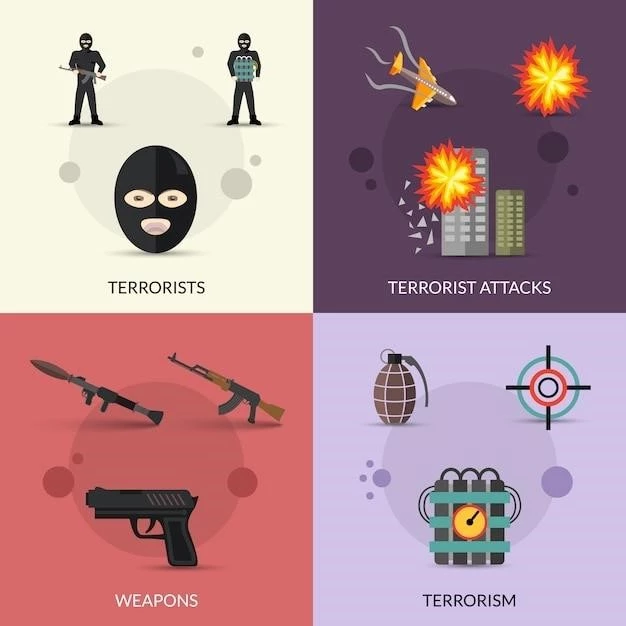The Risk of Weapons of Mass Destruction
The proliferation of weapons of mass destruction (WMD) poses a significant threat to global security. The international community has been grappling with this issue for decades, and despite numerous efforts to curb the spread of these deadly weapons, the risk remains substantial. This article will delve into the dangers associated with WMD proliferation, examine the motivations behind the pursuit of these weapons, and explore the measures in place to mitigate the threat.

Understanding the Threat
Weapons of mass destruction encompass nuclear, chemical, and biological weapons, each capable of inflicting catastrophic damage and causing widespread casualties.
Nuclear Weapons
Nuclear weapons remain the most potent and destructive type of WMD. The detonation of even a single nuclear device could result in hundreds of thousands of immediate deaths, long-term health consequences for survivors, and devastating environmental damage. The use of nuclear weapons in a conflict would have catastrophic global implications.
Chemical Weapons
Chemical weapons utilize toxic properties of chemical substances to kill, injure, or incapacitate individuals. They can be disseminated in various forms, including gases, liquids, or aerosols. Chemical weapons can cause severe burns, respiratory failure, and death. The use of chemical weapons is a violation of international law, yet they continue to pose a threat.
Biological Weapons
Biological weapons employ harmful biological agents, such as bacteria, viruses, or toxins, to cause disease and death in humans, animals, or plants. These weapons can be challenging to detect and control, as they can spread rapidly and silently. The use of biological weapons could lead to pandemics with devastating consequences for global health security.
Motivations for WMD Proliferation
Several factors contribute to the desire of states and non-state actors to acquire WMD:
Perceived Security Dilemma
Some states view WMD as a deterrent against external threats and believe that possessing these weapons will ensure their survival in a hostile international environment. This perception often stems from a lack of trust among nations and the fear of being attacked.
Regional Ambitions and Rivalries
In certain regions, WMD are seen as a means to achieve regional dominance or counter the perceived strength of rivals. Long-standing conflicts and historical grievances can fuel arms races and increase the risk of WMD proliferation.
Terrorism
The potential for terrorist organizations to acquire and use WMD is a growing concern. The devastating impact of even a small-scale WMD attack could have far-reaching political, economic, and social consequences.
International Efforts to Counter WMD Proliferation
The international community has taken significant steps to address the threat of WMD proliferation, establishing treaties, organizations, and initiatives aimed at preventing the spread of these weapons.
The Treaty on the Non-Proliferation of Nuclear Weapons (NPT)
The NPT, which entered into force in 1970, is the cornerstone of the global nuclear non-proliferation regime. The treaty aims to prevent the spread of nuclear weapons, promote cooperation in the peaceful uses of nuclear energy, and further the goal of nuclear disarmament.
The Chemical Weapons Convention (CWC)
The CWC, which entered into force in 1997, prohibits the development, production, stockpiling, and use of chemical weapons. It also mandates the destruction of existing chemical weapon stockpiles. The Organisation for the Prohibition of Chemical Weapons (OPCW) is the implementing body of the CWC.
The Biological Weapons Convention (BWC)
The BWC, which entered into force in 1975٫ prohibits the development٫ production٫ stockpiling٫ and use of biological weapons. However٫ the BWC lacks a strong verification mechanism٫ making it challenging to monitor compliance effectively.

Challenges and Future Outlook
Despite international efforts, WMD proliferation remains a significant challenge. Several factors contribute to the complexity of this issue:
Technological Advancements
Rapid advancements in science and technology have made it easier and more affordable for states and non-state actors to acquire the knowledge and materials necessary to develop WMD.
Lack of Universal Adherence to Treaties
Not all states are party to the major WMD non-proliferation treaties. Those outside the treaty framework are not bound by their obligations, which undermines global efforts to address the threat.
Verification and Enforcement
Verifying compliance with non-proliferation treaties and enforcing their provisions remains a challenge. Effective verification mechanisms are crucial to ensure that states fulfill their commitments.
Conclusion
The proliferation of weapons of mass destruction presents a grave threat to international peace and security. Addressing this challenge requires sustained international cooperation, robust non-proliferation norms, effective verification mechanisms, and a commitment to resolving conflicts peacefully. The international community must remain vigilant in its efforts to prevent the spread of WMD and mitigate the catastrophic risks they pose to humanity.










